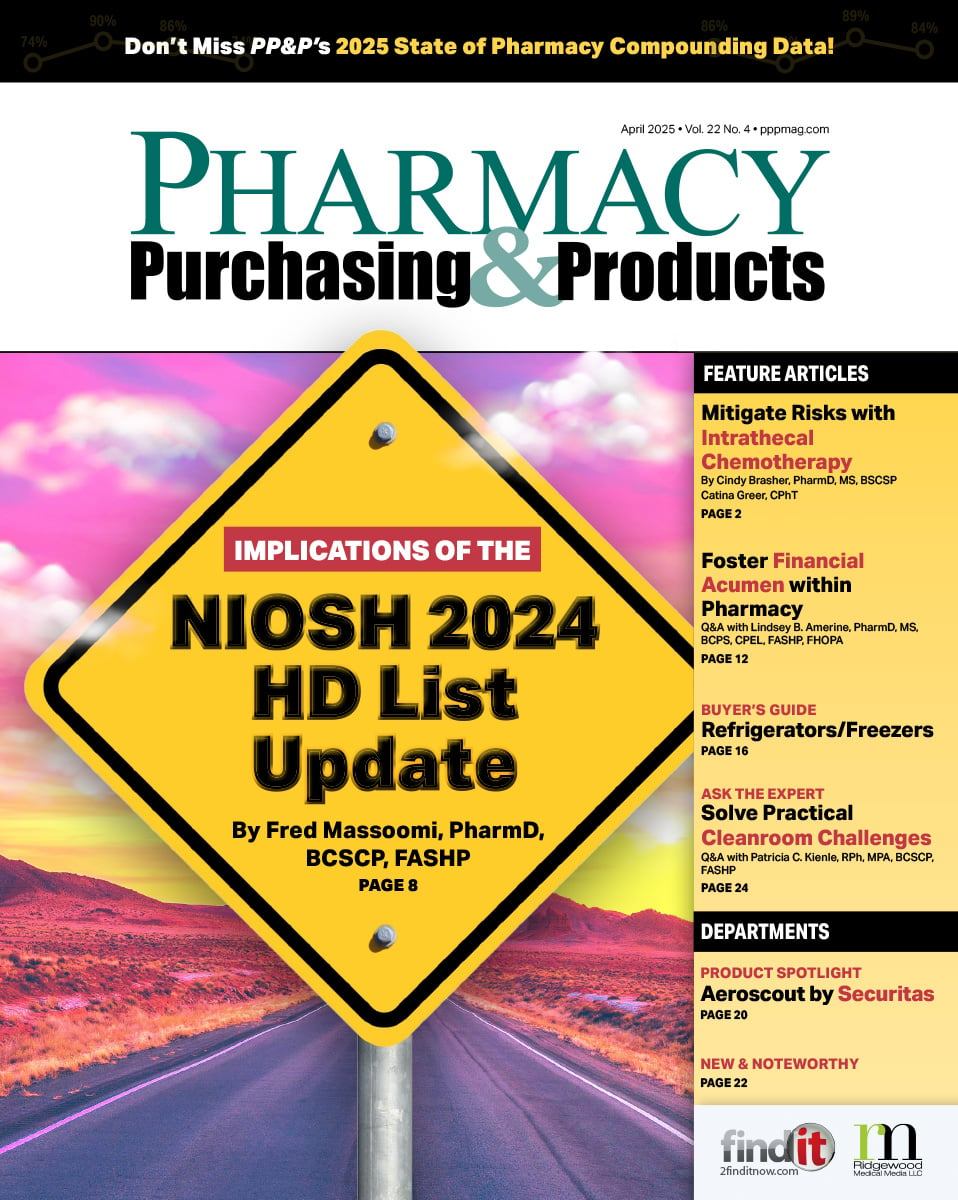- Show Menu
- Contact Us
- FAQs
- Reader Service
- Survey Data
- Survey Winners
- Testimonials
- Upcoming Events
- Webinars
- White Papers
Prepare for Regulatory Updates!
Having recently completed our own annual survey of health-system pharmacists on their automation practices, as well as combed through the robust data presented in this month’s supplement—Cleanrooms & Compounding—which represents the results of CriticalPoint’s USP <797> Compliance Study, it is evident that furthering best practices in medication compounding is on the minds of the vast majority of hospital pharmacy directors across the country.
You are all surely aware of more forthcoming guidance in the form of the proposed USP General Chapter <800> Hazardous Drugs—Handling in Healthcare Settings. As stated by the USP, the intent of this new chapter is to promulgate standards to protect personnel and the environment when handling hazardous drugs. Given the information we have about the potential for exposure to health-care workers, including the frightening ramifications of that exposure, we certainly applaud the efforts of the USP to provide more meaningful guidance on this matter. However, this also will require hospital pharmacies across the country to advance their practices in accordance with these new guidelines.
Likewise, the National Institute for Occupational Safety and Health (NIOSH) has just released the updated list of additions and deletions from its hazardous drug list, available at www.cdc.gov/niosh/docs/2014-138/pdfs/2014-138.pdf. As expected based on past revisions to the original, this current update adds 27 drugs to the list, includes a review of the 2004 list, and indicates the consequent removal of 12 drugs that no longer met NIOSH criteria for hazardous drugs.
The impact of these new regulatory additions has yet to be determined, but it is our hope that the tenets found therein will be studied and adopted by pharmacy operations of all sizes and scopes. Obviously there is no one-practice-fits-all solution to eliminating compounding errors or protecting staff and patients from dangerous substances, but these rules, guidelines, and information resources provide significant tools for affecting positive change. As the old saying goes, if you have a question, it’s likely that others have the same question in mind. Thus, if you have any concerns regarding these new regulations, please drop us a note and let us know. As always, we will do our best to find the answers you need.
All the best,
R. Mitchell Halvorsen
Publisher
Rmh@ridgewoodmedia.com
Like what you've read? Please log in or create a free account to enjoy more of what www.pppmag.com has to offer.








